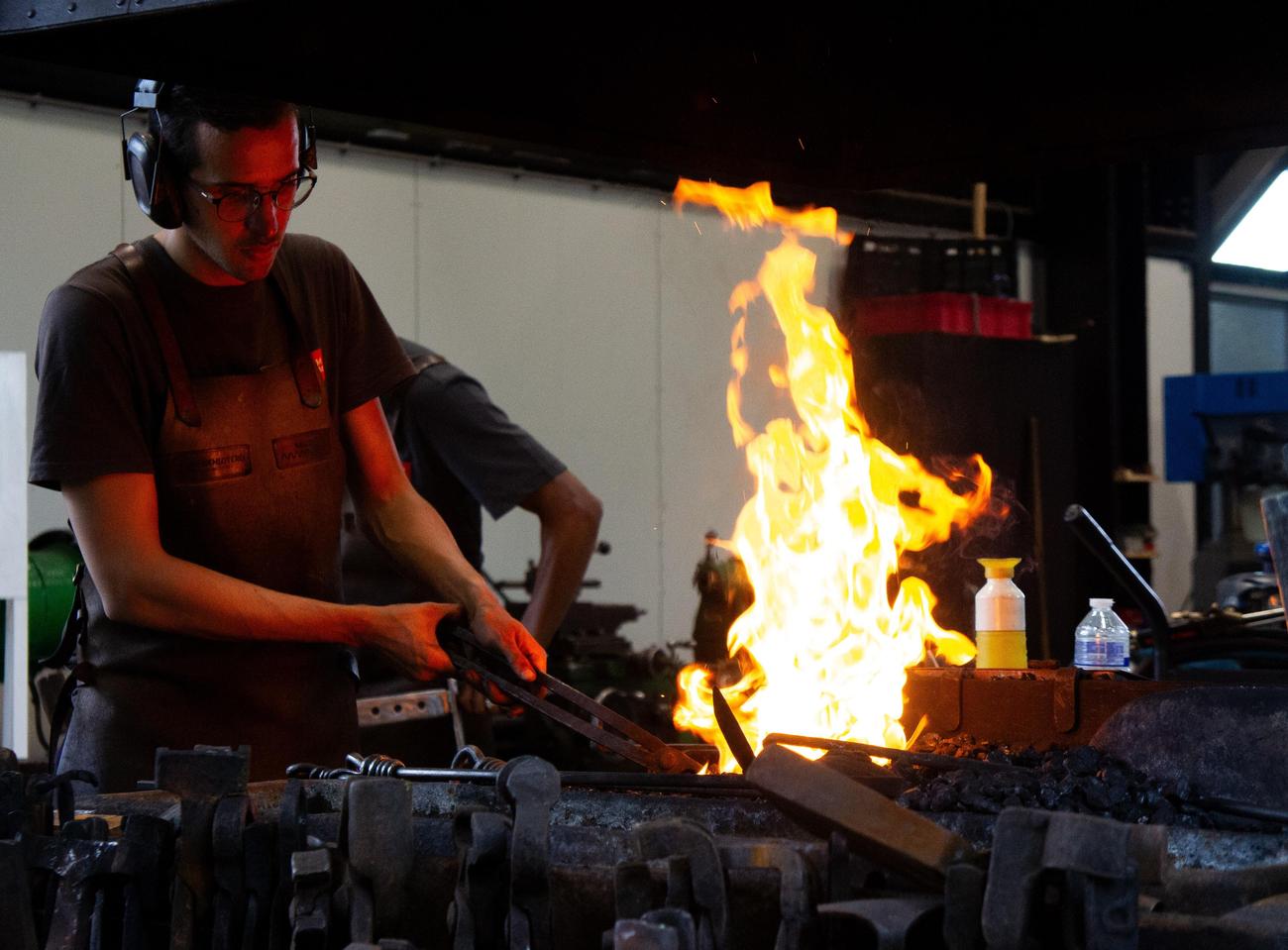Are you ready to dive into the fascinating world of metallurgy? In this article, we will unravel the secrets and explore the captivating science behind one of the most essential materials in our modern world: steel. As an experienced metallurgical engineer specializing in steel, I have spent years deciphering the intricate properties and uncovering the hidden treasures within this remarkable alloy. Join me on this journey as we unlock the secrets of steel and discover its profound impact on our lives. Get ready to be amazed by the captivating metallurgy of steel!

Metallurgy of Steel
Steel, a remarkable alloy of iron and carbon, has played a pivotal role in shaping our modern world. Its versatility and strength make it indispensable in various applications, from automotive and construction to machinery and infrastructure. However, understanding the secrets behind steel and its properties requires delving into the fascinating field of metallurgy.
Metallurgy, the science and technology of metals and alloys, is divided into three general groups: process metallurgy, physical metallurgy, and chemical metallurgy. Process metallurgy involves extracting metals from their ores and refining them to obtain pure metal. In the case of steel, the process of refining iron into steel involves removing impurities and adding alloying elements such as manganese, chromium, nickel, tungsten, molybdenum, and vanadium.
But why do we go through all this trouble? The answer lies in the unique properties that alloying elements impart to steel. By carefully controlling the composition, metallurgical engineers can enhance the mechanical properties of steel such as strength, toughness, and corrosion resistance. These improvements allow steel to withstand the extreme conditions it often encounters, ensuring it can fulfill its intended purpose.
To fully grasp the metallurgy of steel, it’s crucial to understand its microstructure. Think of steel as a well-organized assembly of tiny crystals, known as grains, that form during the cooling process. The size, shape, and arrangement of these grains significantly impact the mechanical properties of steel. By manipulating the cooling rate and other factors, metallurgists can tailor the microstructure, resulting in a wide range of steel types with specific performance characteristics.
One of the key techniques employed in the metallurgy of steel is heat treatment. This process involves heating and cooling steel under controlled conditions to alter its microstructure and improve its mechanical properties. Think of heat treatment as a transformative journey for steel, where it undergoes a carefully curated itinerary of heating, soaking, and quenching. Each step affects the arrangement of atoms within the steel, ultimately leading to a profound change in its properties.
Heat treatment offers a plethora of possibilities. By subjecting steel to different heat treatment techniques, metallurgists can achieve various outcomes. For example, by quenching steel at a rapid rate, they can create a hardened material capable of withstanding heavy loads and resisting wear. On the other hand, tempering involves controlled reheating, which imparts toughness and reduces brittleness in the steel. These sophisticated processes contribute to the rich tapestry of steel’s applications and functionalities.
The significance of metallurgy in the realm of iron and steel extends far beyond simply refining the material. Metallurgical engineers continuously push the boundaries, exploring new frontiers to develop advanced materials with superior properties. Through their expertise, they uncover innovative solutions to pressing challenges, translating scientific knowledge into practical applications that benefit various industries.
In conclusion, the metallurgy of steel is a captivating subject that unravels the secrets hidden within this timeless material. The intricate science behind steel’s composition, microstructure, and heat treatment techniques not only showcases the fascinating nature of metallurgy but also highlights the significant impact steel has on our modern world. By understanding the metallurgy of steel, we gain a deeper appreciation for its importance and the valuable role it plays in shaping our lives.
“The metallurgy of steel reveals the hidden secrets that give this material its exceptional properties and profound impact on our world.”
Steel is one of the most essential materials in the modern world, shaping the architecture, manufacturing, and infrastructure sectors. If you’re curious about the fascinating realm of steel production and its impact on various industries, you must check out these incredible facts about the steel industry. Prepare to be amazed by the technological marvels, impressive statistics, and extraordinary innovations that have driven this sector forward. Click here to uncover the intriguing secrets behind the steel industry: Facts About Steel Industry. Explore the remarkable journey of steel and gain a profound appreciation for this exceptional material that holds our world together.
FAQ
Question 1
What is steel metallurgy?
Answer 1
Steel metallurgy is the scientific study and application of metallurgical principles specifically related to steel, which involves analyzing and optimizing steel compositions, examining microstructures, and conducting mechanical tests to understand and enhance the properties of this alloy.
Question 2
Why is steel important in various industries?
Answer 2
Steel is important in various industries due to its versatility and strength. It is widely used in automotive and construction sectors, as well as in manufacturing machinery, appliances, and infrastructure. The properties of steel, such as its improved strength and fracture resistance compared to other forms of iron, make it an essential material for these industries.
Question 3
What is the process of refining iron into steel?
Answer 3
The process of refining iron and converting it into steel involves removing impurities and adding alloying elements. This is achieved through processes such as roasting the iron ore, heating the ore in air to remove water, decomposing carbonates into oxides, and converting sulfides into oxides. Specific alloying elements like manganese, chromium, nickel, tungsten, molybdenum, and vanadium are added to produce alloys with desired properties.
Question 4
What are the different types of steel?
Answer 4
There are different types of steel, including carbon steels and stainless steels. Carbon steels are primarily composed of iron and carbon, while stainless steels contain iron, chromium, and sometimes other elements like nickel or manganese. Each type of steel has unique compositions and properties that make them suitable for specific applications.
Question 5
How does metallurgy contribute to our modern world?
Answer 5
Metallurgy, specifically the metallurgy of steel, plays a significant role in shaping our modern world. By understanding the properties and behavior of metals and alloys, metallurgists develop new materials with improved characteristics for various applications. The advancements in steel metallurgy have led to the development of stronger and more durable structures, safer vehicles, efficient machinery, and countless other innovations that have transformed multiple industries and everyday lives.
- Unlock Filipino Culture: A Deep Dive into Traditions and Practices - April 23, 2025
- Unlock Spanish Culture: Insights & Opportunities Now - April 23, 2025
- White Spirit Uses & Substitutes: A Deep Dive for Pros & DIYers - April 23, 2025
















